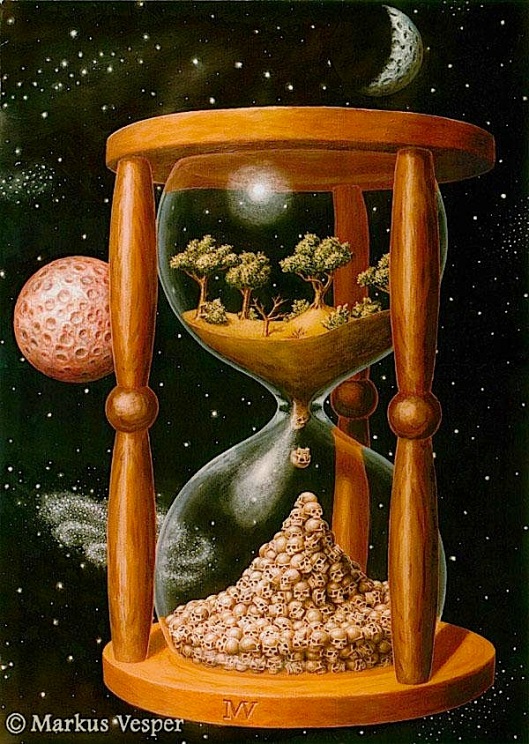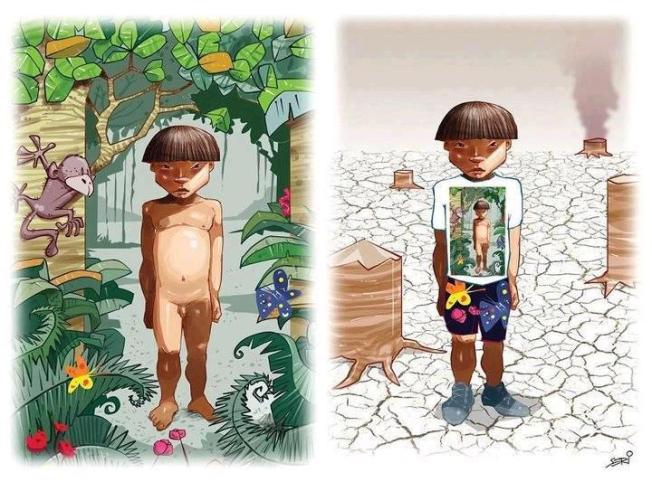Global hunger and obesity are symptoms of the same problem and, what’s more, the route to eradicating world hunger is also the way to prevent global epidemics of diabetes and heart disease, and to address a host of environmental and social ills. Overweight and hungry people are linked through the chains of production that bring food from fields to our plate. Guided by the profit motive, the corporations that sell our food shape and constrain how we eat, and how we think about food. The limitations are clearest at the fast food outlet, where the spectrum of choice runs from McMuffin to McNugget. But there are hidden and systemic constraints even when we feel we are beyond the purview of Ronald MacDonald.
Even when we want to buy something healthy, something to keep the doctor away, we’re trapped in the very same problem that has created our ‘Fast Food Nations’. Try, for example, shopping for apples. At supermarkets in North America and Europe, the choice is restricted to half a dozen varieties: Fuji, Braeburn, Granny Smith, Golden Delicious and perhaps a couple of others. Why these? Because they are pretty: we like the polished and unblemished skin. Because their taste is one that is largely unobjectionable to the majority. But also because they can stand transportation over long distances. Their skin won’t tear or blemish if they are knocked about in the miles from orchard to aisle. They take well to the waxing technologies and compounds that make this transportation possible and keep the apples pretty on the shelves. They are easy to harvest. They respond well to industrial production. These are reasons why we won’t find Black Oxford, Kandil Sinap or the ancient and venerable Rambo on the shelves. Our choices are not entirely our own because, even in a supermarket, the menu is crafted not by our choices, nor by the seasons, nor where we find ourselves, nor by the full range of apples available, nor by the full spectrum of available nutrition and tastes, but by the power of food corporations.
The concerns of food production companies have ramifications far beyond what appears on supermarket shelves. Their concerns are the rot at the core of modern food system. Why there is a worldwide epidemic of farmer suicide, why we don’t know what is in our food system anymore, why black people in the United States are more likely to be overweight than white, and why there are cowboys in South Central Los Angeles?
In ever country, the contradictions of obesity, hunger, poverty and wealth are becoming more acute. India has, for example, destroyed millions of tons of grains, permitting food to rot in silos, while the quality of food eaten by India’s poorest is getting worse for the first time since Independence in 1947. In 1992, in the same towns and villages where malnutrition had begun to grip the poorest families, the Indian government admitted foreign soft drink manufacturers and food multinationals to its previously protected economy. Within a decade, India has become home to the world’s largest concentration of diabetics: people – often children- whose bodies have fractured under the pressure of eating too much of the wrong kinds of food.
India isn’t the only home to these contrasts. The contrasts are global and are present even in the world’s richest country like U.S.
Moreover, to not forget that the general problem of rapid resource depletion that occurs in the poor countries of the world is frequently a result of foreign exploitation and not because of a country’s growing population. The exploitation of the Democratic Republic of the Congo’s natural resources by shady means—“opaque deals to acquire prime mining assets”—organized through shell companies by British and Israeli capital is an example of what can happen.
I have visited a quite good number of countries when I was younger than now, and I am very thankful to my dad for his ability to make us, my family and I, travel to several countries during the summer. I personally enjoyed the travel that we used to do from country to country by bus. I used to write short notes while in the bus. Here is one of them:
“Everywhere I went, foreign commercial interests were exploiting resources after signing contracts with the autocratic government. Prodigious logs, four and five feet in diameter, were coming out of the virgin forest, oil and natural gas were being exported from the coastal region, offshore fishing rights had been sold to foreign interests, and exploration for oil and minerals was under way in the interior. The exploitation of resources in North America during the five-hundred-year post-discovery era followed a typical sequence—fish, furs, game, timber, farming virgin soils—but because of the hugely expanded scale of today’s economy and the availability of myriad sophisticated technologies, exploitation of all the resources in poor developing countries now goes on at the same time. In a few years, the resources of this African country and others like it will be sucked dry. And what then? The people there are currently enjoying an illusion of prosperity, but it is only an illusion, for they are not preparing themselves for anything else. And neither are we.”
We are now living in the postmodern era. Nietzsche was the first philosopher to predict this era. Postmodernism has emerged due to the detrimental impacts of technological developments. We see the serious consequences of environmental ravages in agriculture (soil loss due to the intensification of production methods). Still talking about the field of environmental studies, postmodernism has emerges with people like Rachel Carson. We see the exploitation of resources (nuclear Hiroshima and Nagasaki, the first energy crisis), weapons (nuclear bombs and chemical weapons development) etc.. We also see the effect of technology on health, with the Unethical Nazi doctors, the introduction of drugs with serious side effects on the health and epidemics caused by increased production rates high the agri-food industry. The era of world wars marked the end of the belief in the dogma that science is the key to universal truth to cure all ills. Postmodernism represents a philosophical current issued from the reaction to modernism following this transformation of society.
Postmodernism didn’t work, and you know why? Because it is based on the cumulative effect of accumulation, of mass accumulation. Yes, capitalism! People were talking about the end of the world. To me, the end of the world is the end of postmodernism, but of course not of all its components. The social aspect of postmodernism should remain with the emergence of another era. The social aspect should only remain in all kinds of sciences, but it should also extend to the life of each one of us; hence, the emergence of ethical norms instead of economic ones. The arrival of this paradigm shift was inevitable and today, the direction of the epistemology of science is difficult to predict. Certainly, there will be a paradigm shift, but when and what will be, will remain a mystery till now.
Certainly, there is hope: Farmers suing Monsanto. Permaculture. But to be honest, yesterday, a friend of mine asked me a question. He said: “I didn’t know much about the world until lately .. it doesn’t leave my head .. in a way I wish I’d never looked … does it make you upset or are you at peace .. maybe cause you know lots for longer .. just wondering .. it’s a kind of question I suppose.” I replied by: “I can’t reply clearly on this question because it is kind of mixed feelings. Sometimes I feel very mad, and each time I ask questions about, us, humans, and our society, I remember some people having a binary vision. It is like living in an illusion. And on the other hand, knowing such facts, I feel like I am having cold nerves.” And still talking about hope, I have a friend, currently living in Lima, who is leaving the system. I can’t wait to hear his news and maybe to write about it, and I think that we can all do like him.
Industrial civilization requires that we trade life for power. We must resist for all life is worth.








